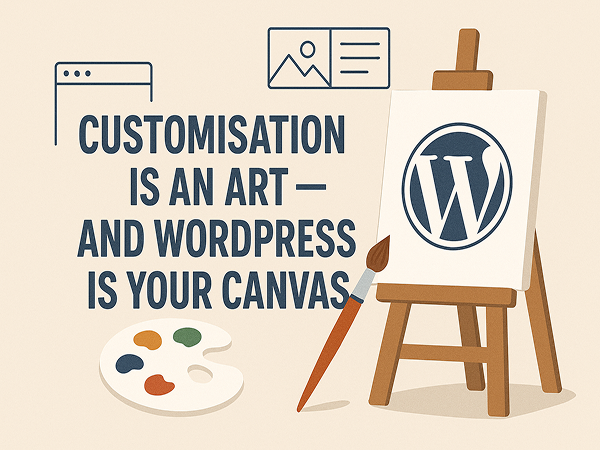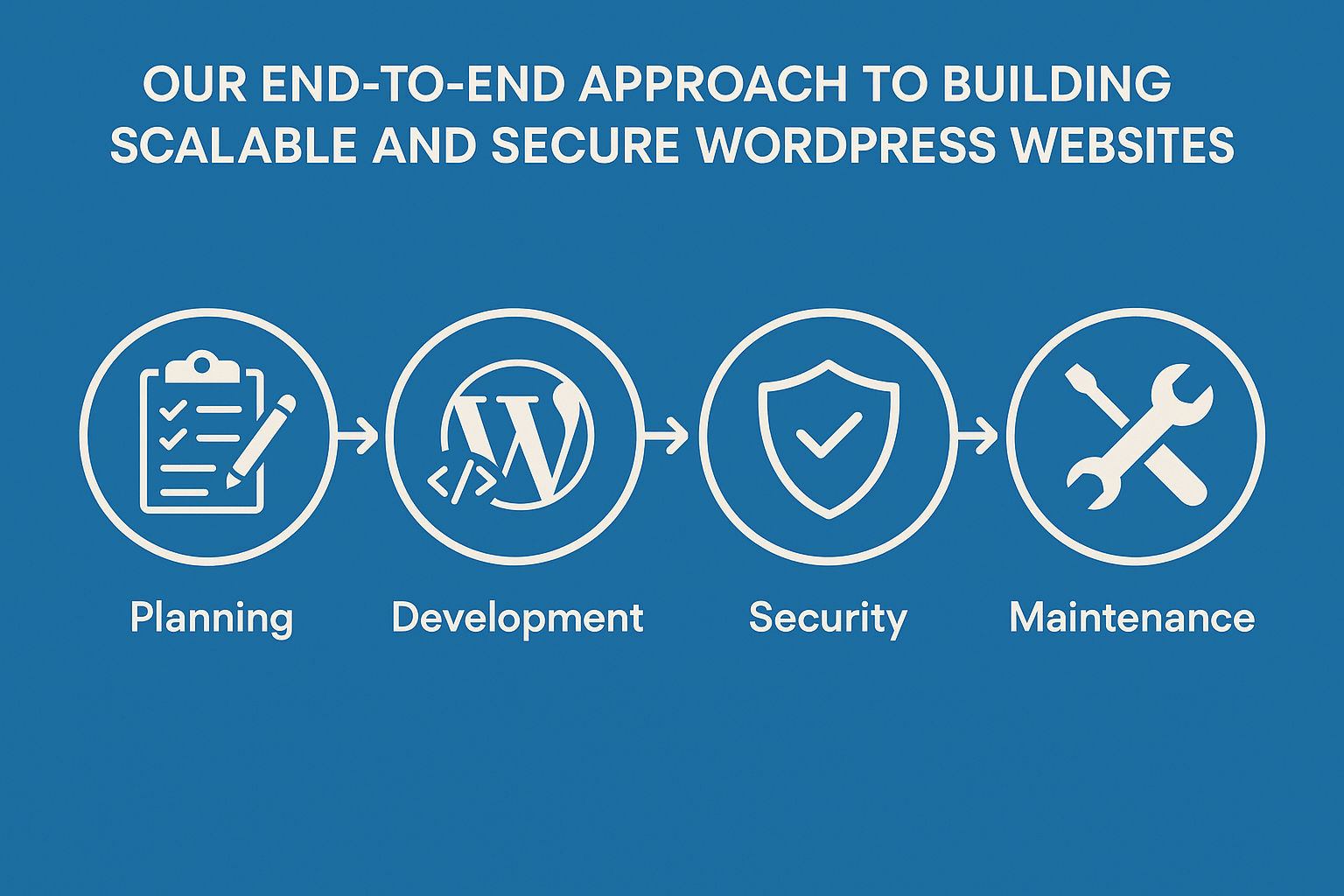Customisation Is an Art — And WordPress Is Your Canvas
In today’s digital-first world, where every brand competes for attention and engagement, your website is often your first (and most important) impression. And while templates and themes can get you started, true differentiation comes through customisation.
WordPress, powering over 40% of the internet, offers a flexible, scalable foundation. But its real power lies in how deeply it can be tailored to your unique needs — aesthetically, functionally, and experientially.
Just like any art form, customising WordPress requires vision, tools, and technique. This post dives deep into how to approach WordPress customisation strategically and responsibly.
Why Customisation Matters
Your business is unique — your website should be too. Off-the-shelf solutions can limit your ability to:
- Deliver a distinct brand experience
- Meet specific business workflows
- Integrate seamlessly with your tools
- Offer custom journeys for different user types
Customisation transforms WordPress from a generic CMS into a tailor-fit digital platform that adapts to your brand, not the other way around.
Common WordPress Customisation Scenarios
1. Custom Themes and Layouts
Businesses often outgrow theme marketplaces. Custom themes offer:
- Pixel-perfect control over design
- Optimised code for performance
- Branding consistency across devices
2. Advanced Forms and Workflows
Beyond simple contact forms, modern sites need:
- Multi-step forms
- Conditional logic
- File uploads
- Integration with CRMs, ticketing systems, or third-party APIs
3. Custom Post Types & Fields
Want to manage content like portfolios, FAQs, testimonials, or properties?
- Custom Post Types (CPTs)
- Taxonomies
- Advanced Custom Fields (ACF)
4. WooCommerce Customisation
E-commerce customisation may include:
- Dynamic pricing or tiered discounts
- Subscription logic
- Product configurators
- Custom checkout flows or upselling logic
5. Role-Based Access & Member Portals
- User roles (admin, editor, subscriber)
- Membership levels
- Custom permissions
6. Third-Party Integrations
- Salesforce / Zoho
- HubSpot / Mailchimp
- Stripe / Razorpay
- Custom APIs (inventory, LMS, booking engines)
The Right Approach to Customisation
1. Discovery & Planning
- What makes the brand or user journey unique?
- What are the limitations of current plugins or themes?
- What will scale with the business?
2. Choose Tools Wisely
- Plugins when they meet 80%+ of needs
- Custom code when performance, logic, or UI demands it
- Page builders like Elementor with a balance of performance
3. Develop with Modularity
- get_template_part() and custom shortcodes
- ACF flexible content fields
- Custom Gutenberg blocks
4. Keep Admin UX in Mind
- Clean, intuitive backend UI
- Helpful labels and documentation
- Eliminating unnecessary clutter
Best Practices in WordPress Custom Development
Use a Child Theme
- Core theme updates don’t break your site
- Your changes are tracked and isolated
Follow WordPress Coding Standards
- Proper file structure
- Meaningful function names
- Use of WP functions
Optimize for Speed & SEO
- Lazy loading for images
- Caching
- Clean semantic HTML
- SEO-friendly URLs
Track with Version Control
Use Git to track progress, handle rollbacks, and collaborate in teams.
Document Everything
Write inline comments and maintain a technical brief — for future you, or future developers.
Security Considerations
Input Validation & Sanitisation
- Sanitise data before saving
- Escape output when displaying
Use Nonces & Capability Checks
- wp_nonce_field()
- current_user_can()
Restrict File Permissions
Limit file editing in production, and only allow essential uploads.
Plugin Hygiene
- Audit and remove unused plugins
- Ensure active plugins are maintained and secure
A Real Use Case: Scalable Education Portal
We worked with an EdTech startup needing:
- Course management
- Student dashboards
- Gamified quizzes
- Stripe payments
- Role-based content access
The result? A 60% drop in support queries, smoother course launches, and a faster content update process for the admin team.
Final Thoughts: Customisation Is a Craft
When done right, WordPress customisation doesn’t just change how a site looks — it changes how a business performs.
It requires:
- A strong understanding of the business and users
- Technical skill
- UX empathy
- An artist’s mindset
Your website isn’t just a digital business card. It’s a living system — designed to grow with you, adapt to your audience, and reflect your values.
And with WordPress as your canvas, the possibilities are endless. All you need is the right brush.
Need help turning your WordPress site into a fully customised experience?
Let’s collaborate and bring your vision to life — one pixel and one function at a time
Let’s Build Something Meaningful.
- 📧 ashwinibhawsar44@gmail.com
- 🌐 https://ashwini.work
- 📱 Available for freelance web design & development projects worldwide

